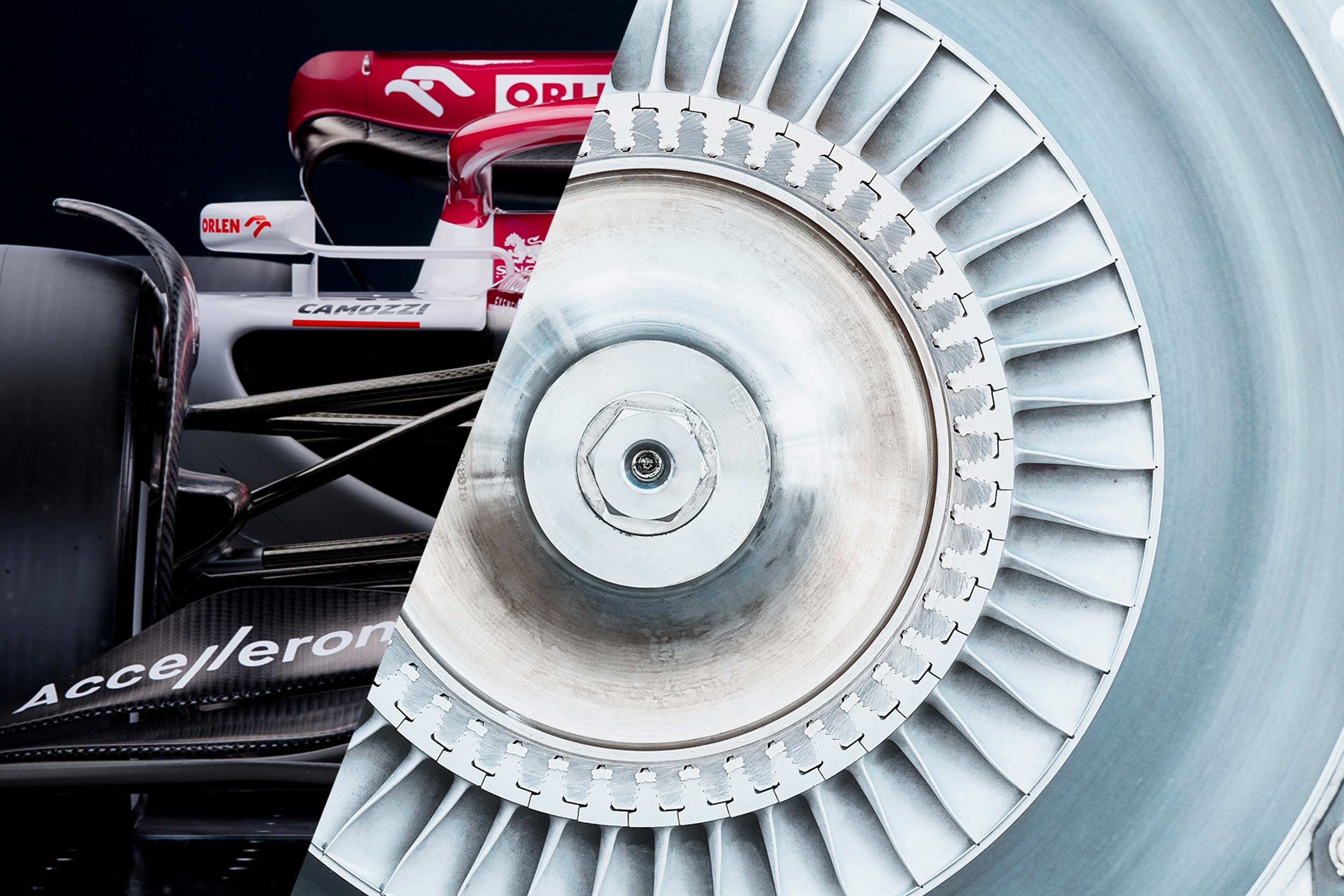At this weekend’s Formula One pre-season test in Bahrain, one team partner’s logo will strike a particularly fresh tone: Accelleron, the future brand of ABB Turbocharging.
The new brand’s presence on the cars of the Alfa Romeo F1 Team ORLEN marks the beginning of its technological partnership with Sauber Group, the Formula One team’s operator. The test weekend is one of the first opportunities for teams to finally drive their cars after a nine-month construction phase. It’s also a perfect example of the technological parallels between the two partners.
Testing is an inherent part of any engineering process: staged experiments designed to provide a maximum amount of information on how a component, material or system will perform in its intended application.
For Alfa Romeo F1 Team ORLEN, the Bahrain testing weekend is essential for establishing whether their new car can excel under race conditions. But behind these first laps lie thousands of earlier tests at Sauber’s headquarters in Hinwil, Switzerland. Here, every component will have undergone a complex process of digital and physical optimization to establish the best possible design within the parameters set by the FIA, Formula One’s governing body.
Hinwil hosts a state-of-the-art closed-circuit wind tunnel, where engineers test model F1 cars at a 60% scale. The 141-meter tunnel weighs 480 tons and is powered by a single-stage axial fan capable of producing winds of up to 288 km/h.
A small change to a car’s exterior can alter its entire aerodynamic profile. Additive manufacturing, or 3D printing, allows the team to rapidly prototype parts and assess their potential impact on the car’s performance. A combination of digital simulation and wind-tunnel experimentation help hone the car’s design before the “real thing” can be constructed.
But Sauber’s Hinwil HQ isn’t the only high-tech testing center in its area. Just an hour’s drive away in the town of Baden, ABB Turbocharging, soon to be Accelleron, runs one of the most sophisticated turbocharger test centers in the world.
Almost 100 years ago, the first turbocharger for commercial applications was tested in Baden. Today, the town continues to host Accelleron’s testing activities. More than 50 specialists work on early-stage testing for new and modified technologies, components and whole turbochargers, establishing thermodynamic performance, mechanical integrity, and reliability. Later-stage testing is also performed to ensure components can withstand the conditions they’ll encounter in the field.
« At full load, a turbocharger’s compressor wheel spins so fast the tips of the wheel’s blade exceed the speed of sound. »
At full load, a turbocharger’s compressor wheel spins so fast the tips of the wheel’s blade exceed the speed of sound. The smallest compressor wheels in Accelleron’s product range complete 1200 rotations per second. Within these extreme operating conditions, reliability is paramount. Turbochargers are critical to engine operation. Should a component fail on a cargo vessel, it could leave millions of dollars’ worth of goods stranded in port or even at sea.
The testing team use a multitude of processes and technologies to identify the smallest variations in a component’s performance. Digital simulation is playing an increasingly important role in parallel to physical testing. Hybrid methods combine computing power with real-world experimentation to give engineers a clearer window into a component’s behavior under different conditions. Lasers and strain gauges are used to measure the vibrations of the spinning blades; software then helps engineers quantify and asses the measurements.
The challenge of testing is made even greater by the fact that Accelleron’s turbochargers have a more than 30-year life cycle. Some units have even entered their sixth decade of operation. “Whereas a Formula 1 car is expected to maintain peak performance for a few hours before being returned to a garage, our turbochargers have to run at sustained performance for years and decades”, says Hervé Martin, head of Advanced Technology Development at ABB Turbocharging. “So, when we use terms such as “reliability,” we’re thinking in very different time frames.”
Yet for Jan Monchaux, technical director at Alfa Romeo F1 Team ORLEN, it’s in such difference that the new partnership’s strength is to be found. “Our end products may be very different, but it’s in the exchange of methodologies we use to create them that the value of our partnership will be realized.”
The partnership will offer teams in the fields of turbocharging and Formula One a window into another engineering world. That may yield some surprising results for both partners. “In engineering, there’s nothing more dangerous than a “we’ve always done it this way” attitude”, says Monchaux. “So for us as Formula One engineers, and our new partners serving the turbocharging industry, this an opportunity to look differently what we both do, and see if there’s something we’ve missed until now.”














